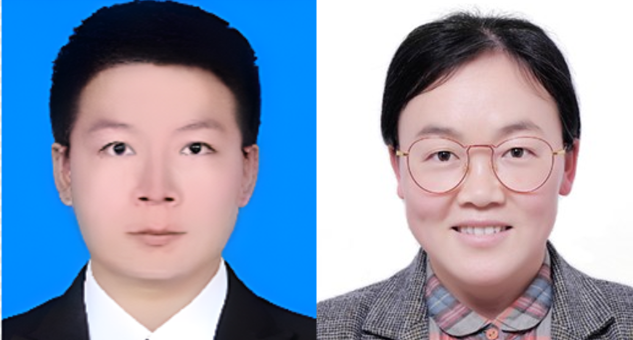On the occasion of the 10th anniversary of Inorganic Chemistry Frontiers, we award Inorganic Chemistry Frontiers Outstanding Paper Awards. The prizes recognise the contributions of all authors and celebrate these exceptional publications.
The following ten papers were selected by journal's Editorial and Advisory Board members based on the science presented and a variety of metrics including article downloads, Altmetric score, and citations. Congratulations to all the winners!
Visible-light radical reaction designed by Ru- and Ir-based photoredox catalysis
Takashi Koike* and Munetaka Akita*
Inorg. Chem. Front., 2014, 1, 562-576

In this review, the authors discussed important early works on radical reaction systems by action of photoredox catalysis. Essential data on photocatalysts and basic reaction design were highlighted.
Cobalt nitrides as a class of metallic electrocatalysts for the oxygen evolution reaction
Pengzuo Chen, Kun Xu, Yun Tong, Xiuling Li, Shi Tao, Zhiwei Fang, Wangsheng Chu, Xiaojun Wu and Changzheng Wu*
Inorg. Chem. Front., 2016, 3, 236-242

In this article, the authors reported an investigation of metallic cobalt nitrides (Co2N, Co3N and Co4N) arising from electron delocalization modulation for oxygen evolution reaction (OER) electrocatalysts in alkaline solution for the first time.
G-quadruplex DNA targeted metal complexes acting as potential anticancer drugs
Qian Cao, Yi Li, Eva Freisinger, Peter Z. Qin,* Roland K. O. Sigel* and Zong-Wan Mao*
Inorg. Chem. Front., 2017, 4, 10-32

In this review, the authors highlighted the recent development of G4-interacting metal complexes, termed G4-ligands, and discussed their binding modes with G-quadruplex DNA and their potential to serve as anticancer drugs in the medical field.
Transmission electron microscopy as an important tool for characterization of zeolite structures
W. Wan, J. Su, X. D. Zou and T. Willhammar*
Inorg. Chem. Front., 2018, 5, 2836-2855

In this review, the authors described the basic principles of transmission electron microscopy techniques for structural characterization, including recent methodological advancements.
High performance single-molecule magnets, Orbach or Raman relaxation suppression?
Alejandro Castro-Alvarez, Yolimar Gil, Leonel Llanos and Daniel Aravena*
Inorg. Chem. Front., 2020, 7, 2478-2486

In this article, the authors analysed which magnetic relaxation mechanism limits the blocking temperature (TB) of high-performance Single-Molecule Magnets (SMM) from a set of 17 literature examples of high-performance SMMs.
Aritz Landart-Gereka, María Mar Quesada-Moreno, Ismael F. Díaz-Ortega, Hiroyuki Nojiri, Mykhaylo Ozerov, J. Krzystek,* María A. Palacios* and Enrique Colacio*
Inorg. Chem. Front., 2022, 9, 2810-2831

In this article, the authors reported the use of a N6-tripodal Schiff base ligand, (S)P[N(Me)N C(H)Py]3, to specifically design a family of CoIIN6 trigonal prismatic cationic complexes [Co(L)]2+bearing different counter-anions (CoCl42−(1), ZnCl42−(2), ClO4−(3) and BF4−(4)).
Cong Chen, Ting Wang, Ke Yan, Shoujie Liu, Yu Zhao and Benxia Li*
Inorg. Chem. Front., 2022, 9, 4753-4767

This article reported a Cu single-atom-incorporated three-dimensional-ordered macroporous TiO2 (Cu/3DOM-TiO2) catalyst designed for photocatalytic CO2 reduction using H2O as a proton donor in both gas-solid and liquid-solid systems.
Runnan Wang, Hao Zhang, Sibo Wang, Fanxu Meng, Jing Sun,* Dawei Lou and Zhongmin Su*
Inorg. Chem. Front., 2023, 10, 1534-1542

In this article, a new double-emission lanthanide metal-organic framework (Eu-BDC-NH2/TDA) with a triclinic crystal system and a P-1(2) space group has been synthesized. This material can be used as a ratio fluorescent probe to detect Al3+ and F- in river and tap water.
Challenges and advancement in direct ammonia solid oxide fuel cells: a review
Dattatray S. Dhawale,* Saheli Biswas, Gurpreet Kaur and Sarbjit Giddey
Inorg. Chem. Front., 2023, 10, 6176-6192

This review has put together the current challenges, and the research advances in the (direct ammonia solid oxide fuel cells) DASOFC area to pave the way for developing kilowatt-scale systems, highlighting the challenges that still need to be addressed and the future recommendations for DASOFC technology development for the single-step conversion of ammonia to power.
Kejie Li, Mengmeng Dai, Zuoling Fu,* Zhiying Wang, Hanyu Xua and Rong Wang
Inorg. Chem. Front., 2024, 11, 172-185

In this article, the authors employed a one-step hydrothermal method to synthesize LiYF₄: Ln³⁺ with micron-sized cones and nano-spherical structures.

